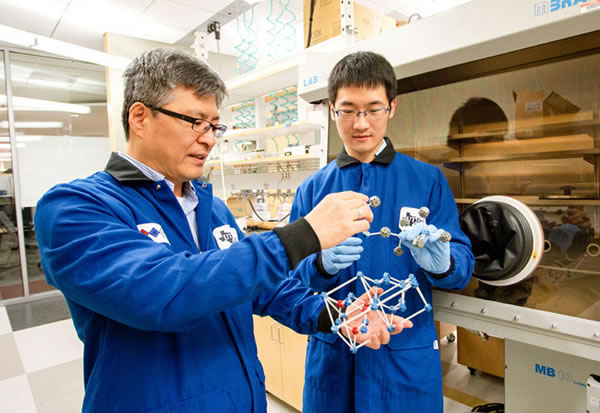
According to foreign media reports, for many years, researchers have been looking for solutions to lithium-ion battery thermal runaway (that is, the battery has accumulated too much heat). Now, researchers at the University of Texas at Dallas have discovered that the problem is not inside the battery material, but on the surface of the battery material.
Dr. Kyeongjae Cho, a professor of materials science and engineering at the Erik Jonsson School of Engineering and Computer Science, said: "It turns out that only the surface of the battery cathode material is the problem, and there is no problem inside the battery. The discovery gives In view of our great hope, we can figure out how to stabilize the battery surface and make truly high-capacity batteries a reality. "According to Cho, the reason why high energy density batteries are expensive is that they are very unstable. "When the battery is continuously charged, the battery material will start to degrade. The released energy will increase the battery temperature, which will cause the battery to catch fire and cause battery safety problems. The good news is that only the surface of the battery material is unsafe and unstable. If this problem can be solved, the battery safety problem can be solved. "
During the continuous charging and recharging of the battery, oxygen will be released from the surface of the battery material. In this process, the transport channel of lithium ions from the inside to the outside may be blocked by the metal nickel dust generated with the release of oxygen. When the channel is blocked, the lithium ions that want to enter and leave the battery will not be transferred, resulting in a rapid decline in battery capacity. As the heat increases, the probability of the battery catching fire and exploding also increases.
The research team believes that this discovery may change the way manufacturers produce batteries. Dr. Cho suggested that a layer of designed oxide coating can be added to the battery surface. Solve the battery overheating problem, can increase the battery capacity by 20% to 30%, the modified battery can withstand a longer charging time.
Based on the above-mentioned new findings, the research team said that there are already people in the industry who are interested in collaborating with Dallas to develop next-generation cathode materials for electric vehicle batteries. In addition, the research team also cooperated with the US Naval Research Laboratory (US Naval Research Laboratory) laboratory to conduct a follow-up study to improve the capacity and safety of battery cathode materials.